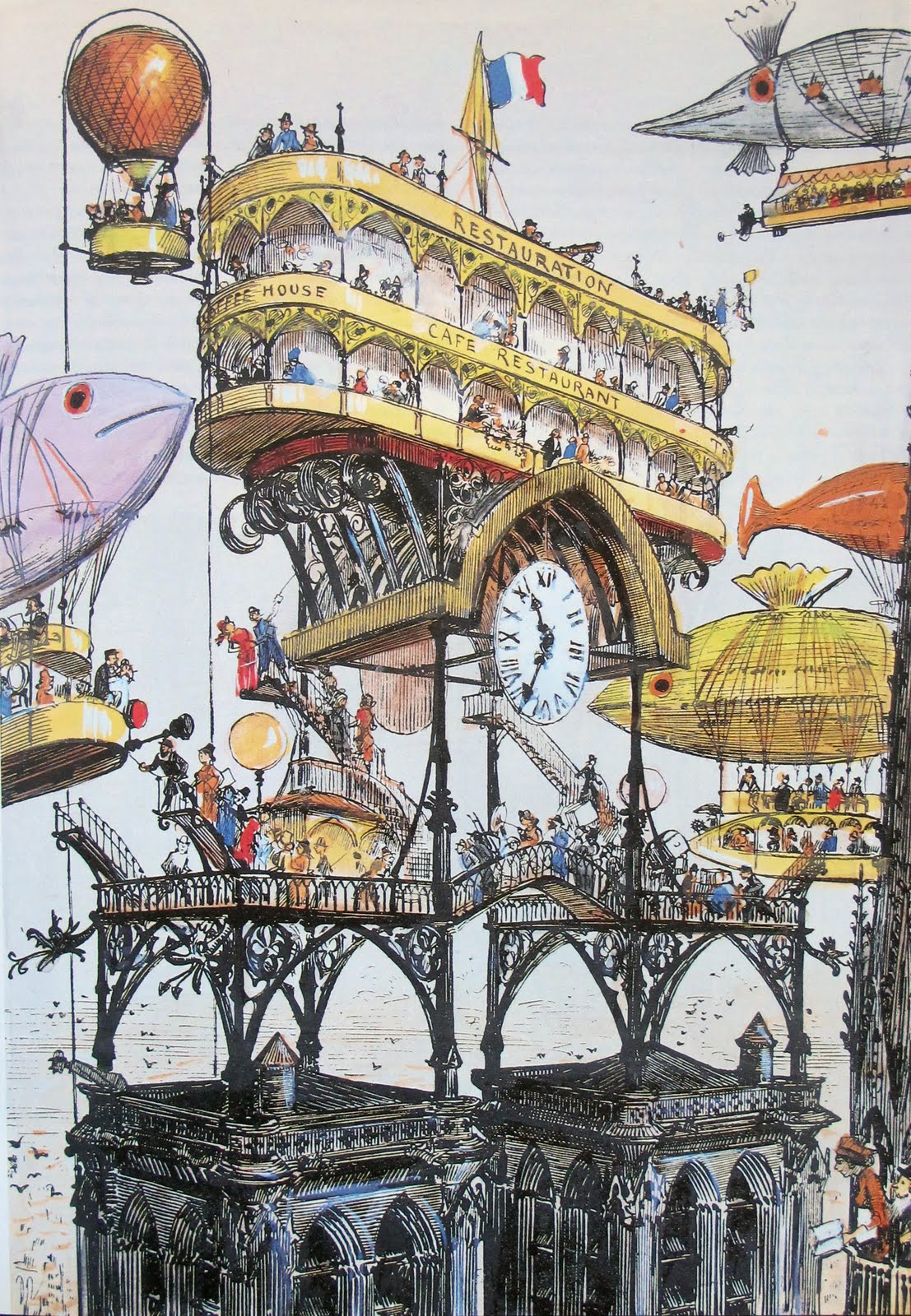

Hetzel’s collective panorama Le Diable à Paris (1845-69). Robida’s artwork in his own hybrid text/image novels constitutes an integral part of the narration and occupies roughly a third of the total printed surface. These novels’ particular proportions of text and image and uncommon degree of interaction between the two mediums closed an era opened with such experimental texts as Charles Nodier and Tony Johannot’s pastiche of Laurence Sterne Histoire du roi de Bohème et de ses sept châteaux (1830) and P.J. Today he is mainly remembered as a pioneer of science fiction, more particularly for a trilogy of panoramas of the future in lavishly illustrated novels: Le Vingtième Siècle (1883 initially published in installments in 1882), La Guerre au Vingtième Siècle (1887), and La Vie Electrique (1892). Throughout his career he published images and words as a satirical cartoonist, a novelist, a chronicler, a historian, an illustrator of literary classics and contemporary fiction, and designed the 1900 Exposition Universelle life –size ‘Old Paris’ display.


Albert Robida (1848-1926) was a graphic artist and writer, a prominent, versatile, and prolific figure on the turn-of-the-century French cultural landscape.


 0 kommentar(er)
0 kommentar(er)
